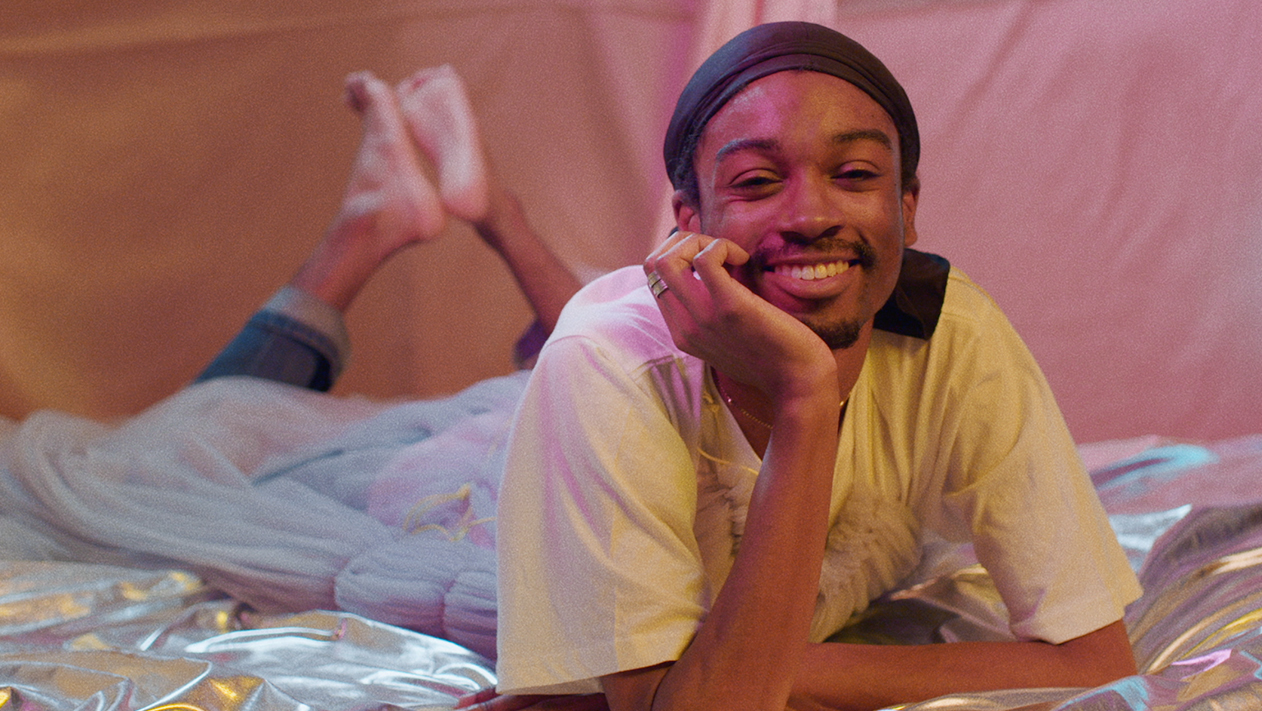It’s no secret that queer spaces in London are on the decline — in fact more than half of the capital’s queer spaces have closed in the last ten years. There is much discussion about how these closures threaten the queer communities safety: nightlife, and a place to be yourself away from society’s tiresome boundaries are integral to self development and finding your identity. But what happens after the club?
Stephen Isaac-Wilson, a filmmaker from south London, was concerned with the idea of isolation and loneliness, and whether queer culture can transcend nightlife — whether the relationships started in the club can provide tangible support in the daytime. “Participating in nightlife is in many ways a luxury — in the first instance, you have to be able to make it to the ‘safe space’. When you’re poor, closeted or live outside a bustling city, it can be difficult feat,” he says. “I wanted to make a film that explores the power of platonic intimacy and re-imagine a world of black queer vulnerability among men.”
For Stephen, now in his mid-20s, starting to experience the realities of adulthood was a trigger for periods of loneliness and isolation that stemmed from the perceived otherness he experienced growing up. Loneliness became a topic that he felt demanded to be explored. “I was feeling quite drowsy in early spring, and wanted to make something that captured that sentiment, as these slipped away depressive, but beautiful moments are often forgotten.”
Stephen felt that he needed to tell a story about queer people that wasn’t nightlife base — something that wasn’t in a club, talking about safe spaces. The result is Day Dream — a beautiful, ethereal film profiling Kareem Reid, a writer and artist interested in black culture and the arts, as well as being the founder of iconic club night Body Party. Featuring Kareem made total sense for Stephen; “He was the perfect prism for a number of personal reasons. Being someone who I also met at nighttime, he worked perfectly in context of the film’s wider premise.” This was a story Kareem wanted to tell too — “I think lots of queer men find it very difficult to be vulnerable with each other… I hope that after watching the film they take, or they find, associate strength and power with vulnerability.”
Stephen’s film was part of the Tate’s Queer British Art exhibition, which was an huge moment of visibility for him, Kareem, and the whole queer community around him. This idea of visibility is a huge issue, because queer narratives have often been marginalised in the creative arts. Kareem notes that this is partly down to survival — queer people have to prioritise the challenge of living before making work, but also down to the fact that often queer people aren’t given the opportunity to really put themselves forward. “There’s obviously not a lack of creativity, just look at all the iconic meme shit black people make on Instagram,” Stephen adds.
Films like Stephen’s are a big step in fighting for visibility, not only for the queer community, but also for black artists. “I’m on a wall at the Tate Britain, in many ways it’s affirming, not just for me, but my peers too,” he says. Kareem adds, “I feel like I no longer have to struggle as much for feeling entitled to being an artist, making art — a struggle that white artists don’t have to face in the same way.” He adds, “I feel as though I am one of the few exceptions to a long history of black artists being written out of the art historical cannon and I see that as a privilege, that I am willing to use to create more space on the wall for other black artists in the future.”
At the private view at the Tate Britain, an elder fellow black artist told both Kareem and Stephen that seeing their work in the exhibition was the fruits of his labour. “He said we were continuing the work that they had started,” Kareem says, “and that was a nice way to look at the work – as something that is part of a lineage of black history, black British history specifically. We’re making history baby.”
Credits
Text Lily Rose Thomas
